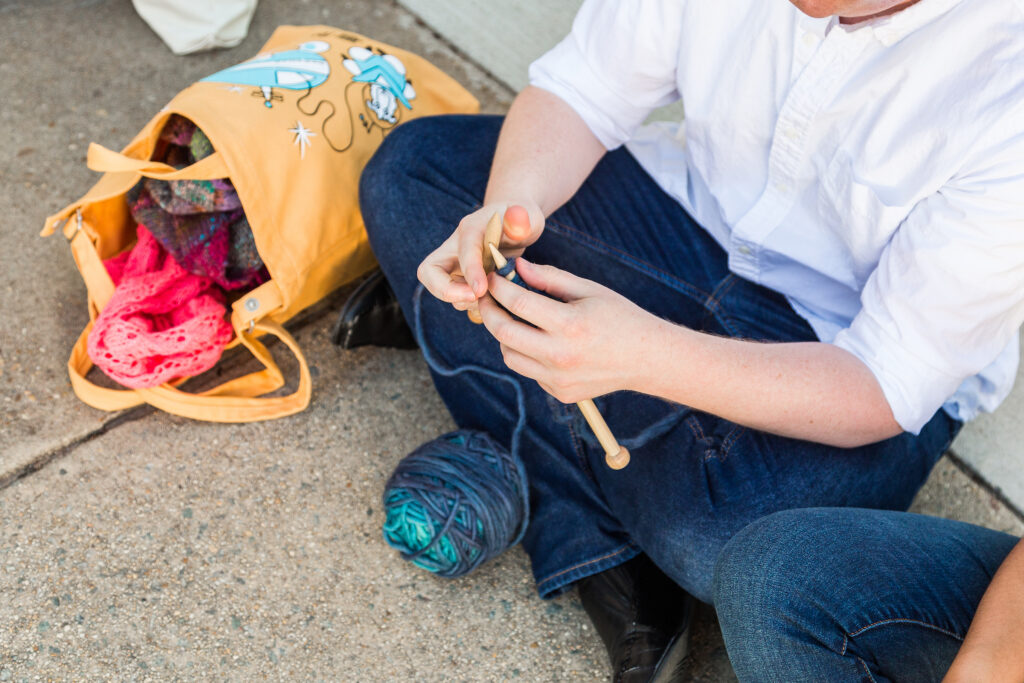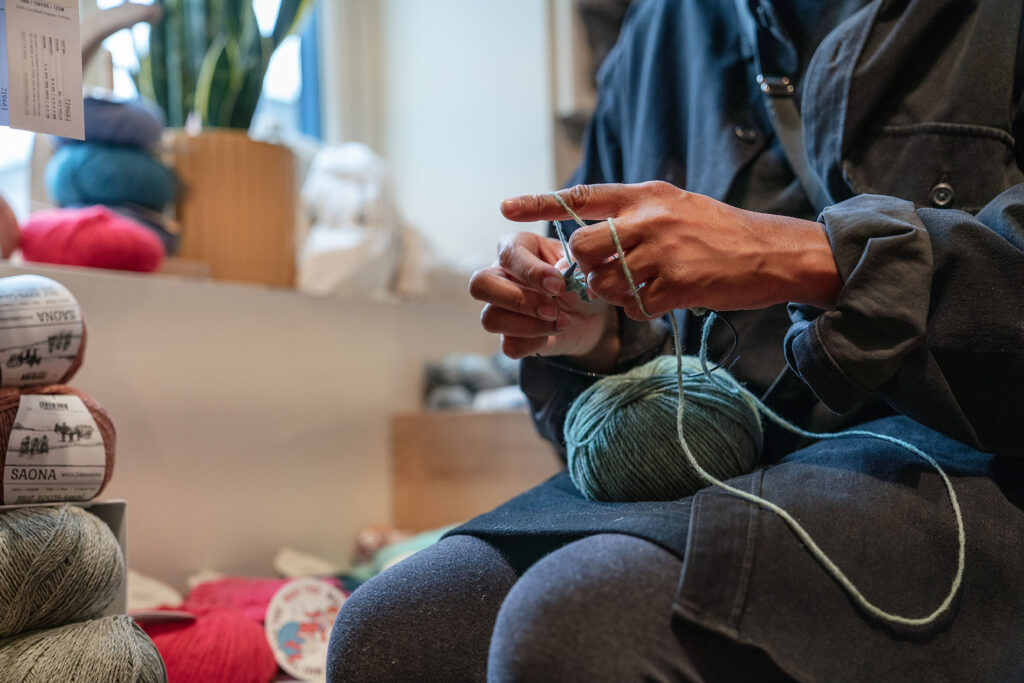Have you always wanted to try colorwork? Does stranded knitting intimidate you? Have you started on your Fair Isle journey but are unsure how to grow your skills? Choose from either beginner, intermediate, or advanced patterns to take the next step with your colorwork skills. This class will discuss setting yourself up for success in a fair isle pattern, reading a chart, picking colors for a successful project, and adapting your knitting to accommodate gauge shifts.
For all classes, we recommend printing a hard copy of your pattern and a roll of highlighter tape if you are able.
Three 2-hour sessions
Pick your project based on your skill level:
Beginner: Winter’s Fern
Skills needed:
- Knitting and purling
- Prior experience knitting in the round (note: this project is not intended to be a first hat)
- Increasing and decreasing
Materials:
- Yarn – we recommend Gilliatt by de rerum natura
- MC: approx. 99 (105, 112) yd (1 ball Gilliatt)
CC1: approx. 34 (36, 39) yd (1 ball Gilliatt)
CC2: approx. 38 (41, 43) yd (1 ball Gilliatt)
- MC: approx. 99 (105, 112) yd (1 ball Gilliatt)
- 16” US #6 for ribbing, 16” US #7 for body, and US 7 DPN for crown
- Stitch Markers
- Highlighter Tape
- Copy of Winter’s Fern Pattern by Karolina Adamczyk
Homework: Cast on hat to smaller needles, finish ribbing, and be ready to start the chart design
Intermediate: Shetland Solstice Hat
Skills needed:
- Knitting in the round
- Increasing & Decreasing
- Basic Fair Isle
- Using DPNs
Materials:
- Yarn – We recommend Jaimeson Spindrift
- 95 yards MC
- 25 yards CC1
- 40 yards CC2
- 30 yards CC3
- 25 yards CC4
Note: Allow approx. 40 extra yards if making a pom pom; we will not be making the pom pom in class
- 95 yards MC
- US 4 circular needle 16” length (for body of hat)
- US 4 DPNs or long circular needle (if working magic loop for crown of hat)
- US 2 circular needle, 16” length (for brim)
- Stitch markers
- Highlighter Tape
- A copy of the Shetland Solstice Hat by Gudrun Johnson
Preparation:
Cast on either your hat and knit the ribbing – be ready to start the chart design in class.
Advanced: Feel the Bern
Skills needed:
- Prior sweater-making experience – this pattern is not suitable for a first sweater
- Knitting in the round
- Increases, decreases, knit, purl
- Basic Fair Isle Skills
Materials:
- Yarn – we recommend de rerum natura Gilliatt
- C1: 184 (207, 230, 253, 276, 299) {322, 345, 368, 391} yards
169 (190, 211, 232, 253, 274) {295, 316, 337, 358} meters
C2: 274 (308, 343, 377, 412, 446) {480, 514, 548, 584} yards
251 (282, 314, 345, 377, 408) {439, 470, 501, 534} meters
C3: 63 (71, 78, 86, 94, 102) {110, 117, 125, 133} yards
58 (65, 72, 79, 86, 94) {101, 107, 115, 122} meters
C4: 70 (79, 87, 96, 105, 114) {122, 131, 140, 148} yards
64 (73, 80, 88, 96, 105) {112, 120, 128, 136} meters
- C1: 184 (207, 230, 253, 276, 299) {322, 345, 368, 391} yards
Note: the pattern is written for a cropped length and short sleeves. You will need additional skeins of yarn if you wish to lengthen the sweater.
- US 7 – 4.5 mm in both large and small circumference for body and sleeves, see pattern for details
- US 5 – 3.75 mm in both large and small circumference for ribbing on body and sleeves, see pattern for details
- Stitch markers
- Highlighter Tape
- Waste yarn or stitch holders
- A copy of the Feel the Bern pattern by Caitlin Hunter
Preparation:
Knit a gauge swatch in both stockinette stitch and in the fair isle pattern. Please measure your swatches both prior to and after washing and blocking. If you do not get gauge, change your needle size accordingly. If you have questions about gauge please email the instructor prior to class.






